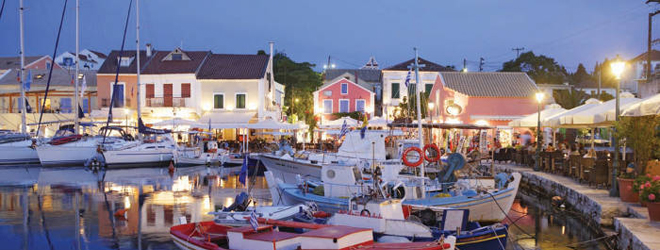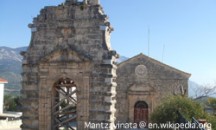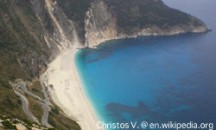
Kefalonia
Kefalonia
The Ionian islands lie to the west of mainland Greece, each with its own distinct character, and each bearing testimony to the various colonisations and historical influences of its numerous rulers. The capital of Kefalonia is Argostoli, a busy town with lush surrounding countryside.
Surviving earthquakes
Like Zante, Kefalonia was hit by a series of earthquakes in the summer of 1953, and almost all buildings on the island were destroyed, safe for the village of Fiscardo in the north. The largest earthquake’s epicentre was just below the southern tip of Kefalonia, and caused the entire island to be raised by 60 cm, where it remains today. An estimated 100 000 of the population of 125 000 left the island, causing huge damage to its economy.
The current population stands at about 37 000. In 2003 a smaller earthquake again caused damage to buildings in and around Argostoli. The convent of Moní Agíou Andréa, dating back to 1264, was also destroyed in the earthquake of 1953, but has been rebuilt as a museum to house icons and frescoes rescues from the quake. Argostoli itself was largely rebuilt with donations from emigrants, and the destruction of the town and its rebuilding can be seen in a photographic exhibition in the Historical and Folk Museum.
Archaeological sites

There are dozens of archaeological sites on the island, and important discoveries from the Mycenaean era have been made, including the tholos tombs on the outskirts of Tzanata, where kings from the Mycenaean period, roughly 1300 BC, were buried.
A Roman burial site dating from between the 2nd century BC and the 4th century AD was also discovered in Fiscardo. Archaeological finds can be viewed in the Archaeological Museum in Argostoli.
Agriculture
There are more than one million olive trees on Kefalonia, covering 55% of the island’s land mass, and understandably olive oil production is a major component of the island’s economy. In addition, vegetable production and winemaking are important agricultural activities. The Mount Aínos National Park surrounds Mount Aínos, the highest peak in the Ionian islands.
Holiday resorts

Owing to its proximity to Italy, Kefalonia is a popular holiday destination for Italians. Most visitors stay in Lassi, near the Argostoli, or in the south coast resorts such as Néa Skála.
The most famous beach of Kefalonia is Myrtos and as with its neighbour Zante, there are some spectacular caves on the coast of Kefalonia.
The small harbour town of Sami on the east coast was used to carefully recreate the town of Argostoli of the 1940s for the film Captain Corelli’s Mandolin, although the original novel by Louis de Bernières is believed to be inspired by the picturesque village of Farsa, just outside Argostoli. Both the novel and the film have raised Kephalonia’s profile as a tourist destination.
Accommodation
The 5-star Apostolata Elios is a luxury resort hotel set on a hillside 3 km from Skala, whereas the 5-star Emelisse Art Hotel comprises traditional-style stone houses and offers luxury facilities. The Olga is a small, modern hotel in the centre of Argostoli and the Linardos, in the pretty village of Asos, offers views across the bay.